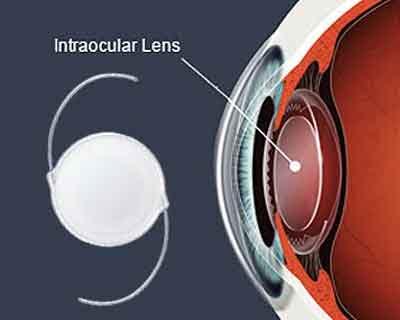- Home
- Editorial
- News
- Practice Guidelines
- Anesthesiology Guidelines
- Cancer Guidelines
- Cardiac Sciences Guidelines
- Critical Care Guidelines
- Dentistry Guidelines
- Dermatology Guidelines
- Diabetes and Endo Guidelines
- Diagnostics Guidelines
- ENT Guidelines
- Featured Practice Guidelines
- Gastroenterology Guidelines
- Geriatrics Guidelines
- Medicine Guidelines
- Nephrology Guidelines
- Neurosciences Guidelines
- Obs and Gynae Guidelines
- Ophthalmology Guidelines
- Orthopaedics Guidelines
- Paediatrics Guidelines
- Psychiatry Guidelines
- Pulmonology Guidelines
- Radiology Guidelines
- Surgery Guidelines
- Urology Guidelines
After cataract surgery, IOL implantation not recommended for children 6 months or younger

USA: Intraocular lens (IOL), contact lenses, or spectacles are used for an optical correction after cataract surgery in children aged 2 years or younger. A study comparing the visual outcomes and adverse events associated with IOL use found that lens implantation can be performed in children older than 6 months by an experienced surgeon. Also, the authors do not recommend IOL implantation for children 6 months or younger because of a higher risk of visual axis opacities, and myopia associated with IOL.
The review, published in the journal Ophthalmology, suggests that while IOL implantation can be done safely with acceptable side effects in children older than 6 months of age. But owing to the unpredictability of ocular growth could mean that these children will have refractive errors later in childhood. This may necessitate IOL exchange or wearing spectacles or contact lenses with a large refractive correction.
Scott R. Lambert, Department of Ophthalmology, Stanford University School of Medicine, Palo Alto, California, and colleagues searched the databases of clinical trials in February 2019, without date or language restrictions. The search resulted in 194 potentially relevant citations, and 34 were selected for full-text review. Fourteen studies were determined to be relevant to the assessment criteria and were selected for inclusion in this assessment.
Also Read: Intraocular lenses can benefit LASIK reject patients
Key findings of the study include:
- Intraocular lenses were associated with visual outcomes similar to outcomes for contact lenses or spectacles for children who had both bilateral and unilateral cataracts. Intraocular lenses were also associated with an increased risk of visual axis opacities.
- All treatments were associated with a similar incidence of glaucoma. Although ocular growth was similar for all treatments, infants younger than 6 months who underwent IOL implantation had large myopic shifts that often resulted in high myopia or severe anisometropia later in childhood.
- Corneal endothelial cell counts were lower in eyes that underwent IOL implantation.
- The incidence of strabismus was similar with all treatments.
Also Read: Early surgical intervention beneficial in Nocardia infection following intraocular surgery
"The training and experience of the surgeon, as well as ocular and systemic comorbidities, should be taken into consideration when deciding whether IOL implantation would be appropriate," concluded the authors.
To read the complete study log on to https://doi.org/10.1016/j.ophtha.2019.05.009

Disclaimer: This site is primarily intended for healthcare professionals. Any content/information on this website does not replace the advice of medical and/or health professionals and should not be construed as medical/diagnostic advice/endorsement or prescription. Use of this site is subject to our terms of use, privacy policy, advertisement policy. © 2020 Minerva Medical Treatment Pvt Ltd